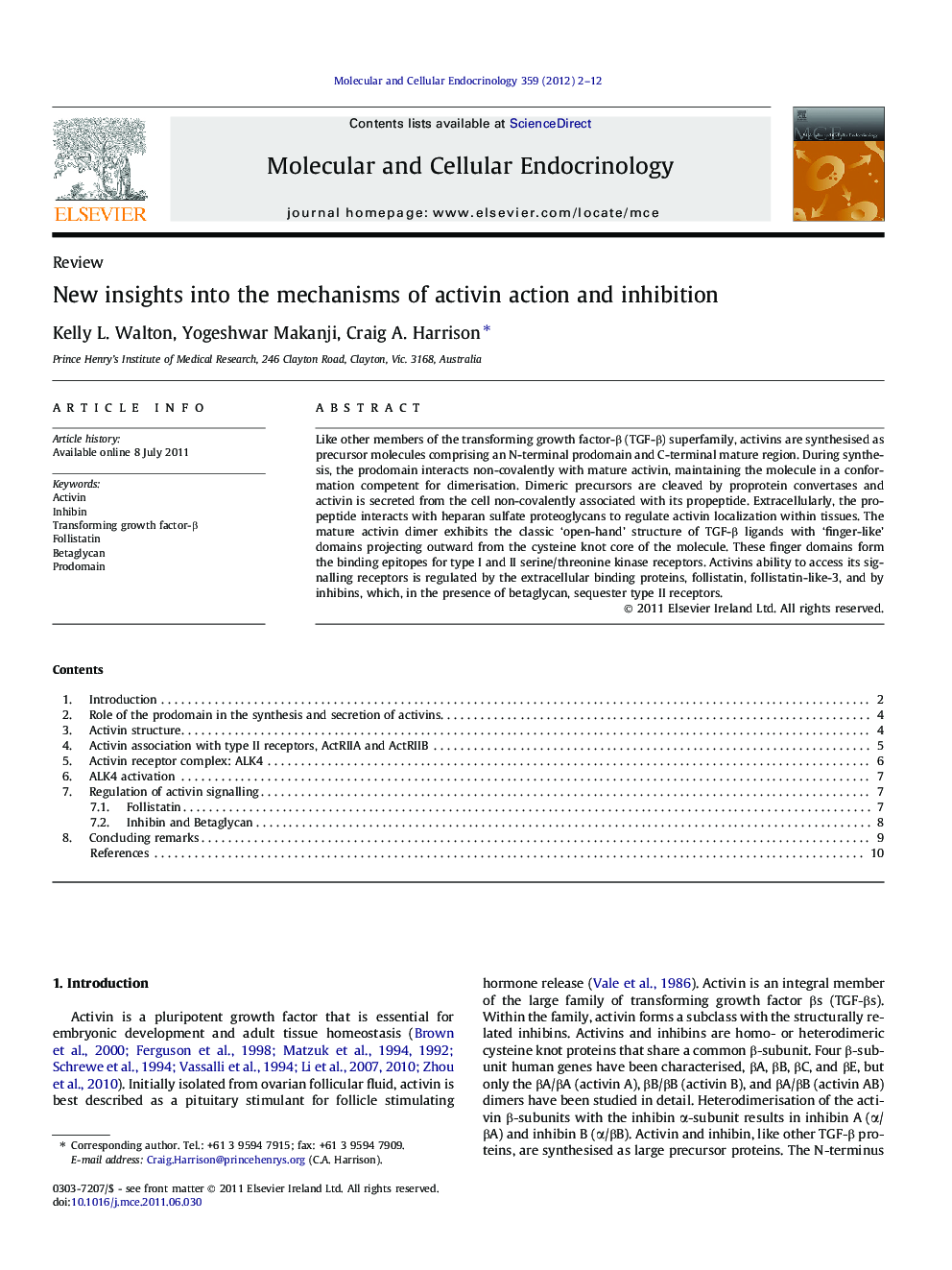| Article ID | Journal | Published Year | Pages | File Type |
|---|---|---|---|---|
| 2196353 | Molecular and Cellular Endocrinology | 2012 | 11 Pages |
Like other members of the transforming growth factor-β (TGF-β) superfamily, activins are synthesised as precursor molecules comprising an N-terminal prodomain and C-terminal mature region. During synthesis, the prodomain interacts non-covalently with mature activin, maintaining the molecule in a conformation competent for dimerisation. Dimeric precursors are cleaved by proprotein convertases and activin is secreted from the cell non-covalently associated with its propeptide. Extracellularly, the propeptide interacts with heparan sulfate proteoglycans to regulate activin localization within tissues. The mature activin dimer exhibits the classic ‘open-hand’ structure of TGF-β ligands with ‘finger-like’ domains projecting outward from the cysteine knot core of the molecule. These finger domains form the binding epitopes for type I and II serine/threonine kinase receptors. Activins ability to access its signalling receptors is regulated by the extracellular binding proteins, follistatin, follistatin-like-3, and by inhibins, which, in the presence of betaglycan, sequester type II receptors.
► Activin is a disulphide-linked dimer exhibiting a classic ‘open-hand’ structure. ► Activin potentiates its bioactivity via interactions with type I and II kinase receptors. ► Follistatin, follistatin-like-3, and inhibin block activin/receptor complex formation. ► The pro-region of the activin precursor (prodomain) modulates activin synthesis and signalling. ► The activin prodomain is an attractive tool for targeted inhibition of activin signalling in vivo.
